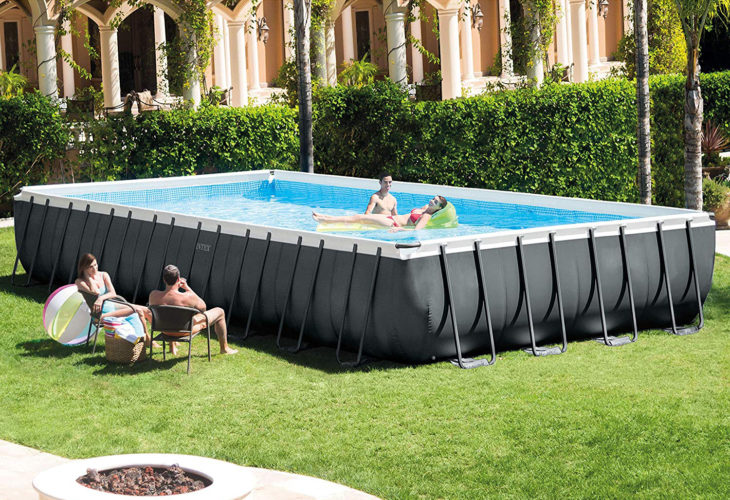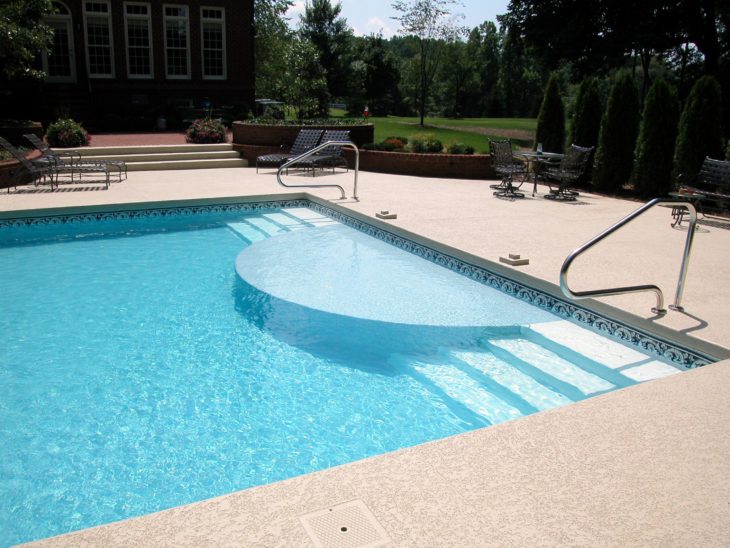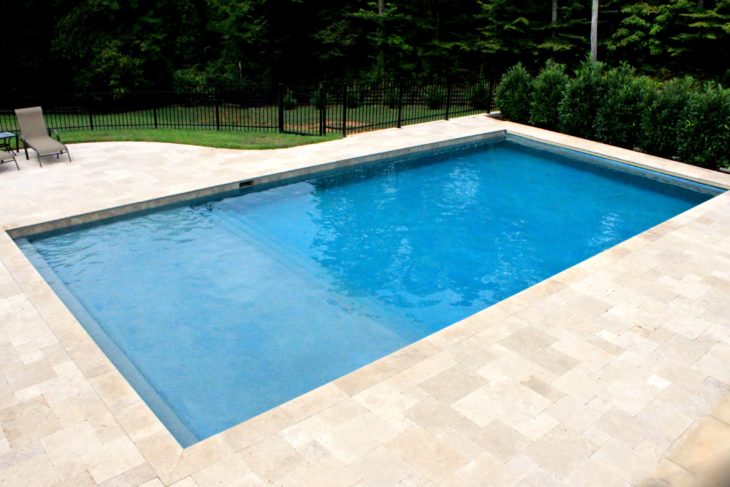So you’re looking to get a swimming pool for your backyard but have no idea what type to get? From the get-go, we can safely say that you have more than one option to explore. Each different type of swimming pool has its own advantages and disadvantages. So without further ado, let’s get straight into exploring the different types of swimming pools.
Contents
1. Above Ground Pool

Source: people
The clear and distinctive advantage to above ground pools is the fact that they cost nothing compared to inground pools. In the case that you decide to get one and build a large deck around it, then your costs would come something close to that of an inground pool.
On the other hand, these pools cannot be compared to inground pools in terms of aesthetics. A lot of people have mixed feelings regarding these pools because they look nothing of the par. These pools will generally never add to the overall appearance of your home, and especially of your yard. As a matter of fact, these pools will most likely be a deterrent.
Another disadvantage to above ground pools is their depth and design limitations. In most cases, these pools come in three distinctive designs – circle, rectangle, and oval. As we said, the best thing about these pools is their low cost, but do understand that their walls are very prone to oxidation and rust. Should you decide to build an above-ground pool, discountpoolsupply.com is the go-to shop for pool kits, accessories, and more.
2. Vinyl Inground Pools

Source: pinterest
There are many types of inground pools, but most notable are vinyl, concrete, and fiberglass pools. Another popular type of inground pool is a plunge pool, which you can find out mere if you click here.
Vinyl ones are best if you’re on a budget, and they will most likely cost between $5,000 and $10,000, depending on the size.
The greatest advantage to vinyl pools is the fact that you can make the pool as deep and curvy/straight/large as you like, however, you’re very much limited with size and shape.
On average, these pools will last between seven and twelve years, before the liner starts breaking down. The average cost for replacing the liner will be anything between $3,000 and $7,000, depending on the size and shape of the pool.
3. Concrete Inground Pool

Source: pinterest
The best thing about concrete pools is the fact that you can design and customize them in any size or shape you like. Furthermore, the depth of the pool is also up to your choosing. These pools look the best because they can be customized however you like. Concrete pools add most to the value of your property.
However, the biggest drawback to these pools is the fact that they require a lot of maintenance. The pool must look good, clear, and most importantly, clean. On average, these pools go through an expensive resurface between eight and fifteen years.
4. Fiberglass Inground Pool

Source: original1
Fiberglass inground pools require the least amount of maintenance, and they are generally considered as a very good option for homeowners. These pools can be very easily installed since they are pre-made and only require a hole to be dug. These pools can be set up in as little as five days. Furthermore, these pools are excellent because they can last up to 35 years without needing any major changes or resurfaces.
The biggest disadvantage comes in the form of transportation issues. Since these pools are pre-made and installed directly into the hole, they need to be transported to your home.
